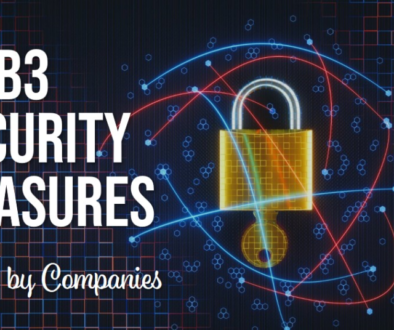6 Things Prospective dApp Developers Need to Know
The market for decentralized applications has grown to a hefty $31.2 billion as of 2023. This expansion highlights the deep interest and investment flooding into blockchain technology and its applications. Developers eager to dive into this bustling sector must grasp the basic principles and hurdles of dApp development.
This field is constantly changing and packed with technical intricacies. Developers need to tackle these to create efficient, secure, and user-friendly applications. This introduction paves the way for uncovering the crucial knowledge every upcoming dApp developer needs to succeed in this fast-paced industry.
Understanding Cross-Chain dApps
A key development in blockchain is the rise of cross-chain dApps. These apps work on several blockchain networks, which expands their features and user base. Inter-blockchain communication (IBC) modules are essential here, allowing different blockchains to talk to each other easily.
By using IBC modules, developers can create dApps that take advantage of the unique benefits of various blockchain systems. This ability to work together boosts the functionality of dApps and makes them more efficient and accessible, attracting users from around the world.
Smart Contract Essentials
Every decentralized app relies on a smart contract. These contracts operate automatically, with their rules encoded in computer code. Most smart contracts are created using languages like Solidity for Ethereum or Rust for Solana and similar blockchains.
For developers, ensuring the security of these contracts is paramount. Since smart contracts handle transactions and manage data on blockchain networks, any weaknesses can result in serious financial losses. It’s essential for every dApp developer to grasp common security risks and learn how to prevent them.
The Role of Consensus Mechanisms
The decision-making systems within blockchain, known as consensus mechanisms, ensure that all transactions get a unanimous nod across the network without needing a central overseer. Various methods, like Proof of Work (PoW) and Proof of Stake (PoS), cater to different priorities, influencing both the efficiency and safety of decentralized apps.
For example, PoW is highly secure but demands a lot of energy. Conversely, PoS is lighter on power use but relies heavily on active participation from its stakeholders to stay secure. Developers have to pick the most fitting consensus method to align with their dApp’s specific needs and objectives.
Frontend and User Experience Design
Even though the blockchain part of a dApp operates on a decentralized network, users engage with these applications through a frontend interface. It’s crucial to make this interface user-friendly. Developers should aim to create interfaces that are functional and accessible to those who may not be familiar with blockchain technology. This means using modern web development tools and design strategies to ensure a smooth user experience.
The objective is to hide the complexities of the blockchain behind a simple and engaging interface. Analyzing user behavior can help refine the design, making sure that user feedback shapes ongoing improvements. Additionally, adapting the design for various devices ensures that the dApp remains both versatile and powerful.
Regulatory Compliance and Legal Considerations
Dealing with regulations is a key part of building dApps. As digital assets and blockchain applications face more scrutiny, developers need to keep up with the latest rules that could impact their work. This means knowing the legal aspects of using blockchain technology in different areas and making sure the dApp follows all relevant laws.
Following these legal requirements not only safeguards the developer but also helps earn user trust. Regularly consulting with legal experts in blockchain can prevent problems down the line, keeping projects on course. Plus, being open about compliance efforts with users creates a responsible and trustworthy atmosphere.
Testing and Deployment
Building a dApp involves careful testing to make sure it works well, is secure, and can handle growth. Developers should use a solid testing plan that covers unit tests, integration tests, and stress tests to find any problems that might affect the dApp’s performance. Once testing is complete, the next step is to launch the dApp on a blockchain network.
As the user base expands and blockchain technology changes, developers need to handle updates thoughtfully and scale the app accordingly. Using automated deployment tools can make this easier, minimizing mistakes and speeding up the process. Additionally, ongoing monitoring after deployment helps the app adjust and perform well in the real world, quickly tackling any issues that arise.
Final Thoughts
The blockchain landscape keeps evolving, making the job of a dApp developer more challenging and interesting. By getting a grip on cross-chain features with IBC modules, ensuring smart contract security, choosing the best consensus mechanism, prioritizing user experience, following regulatory guidelines, and applying solid testing and deployment methods, developers can build effective and lasting dApps. For dApp developers, the path is about constant learning and adjusting, with every project offering new challenges and chances for creativity.



